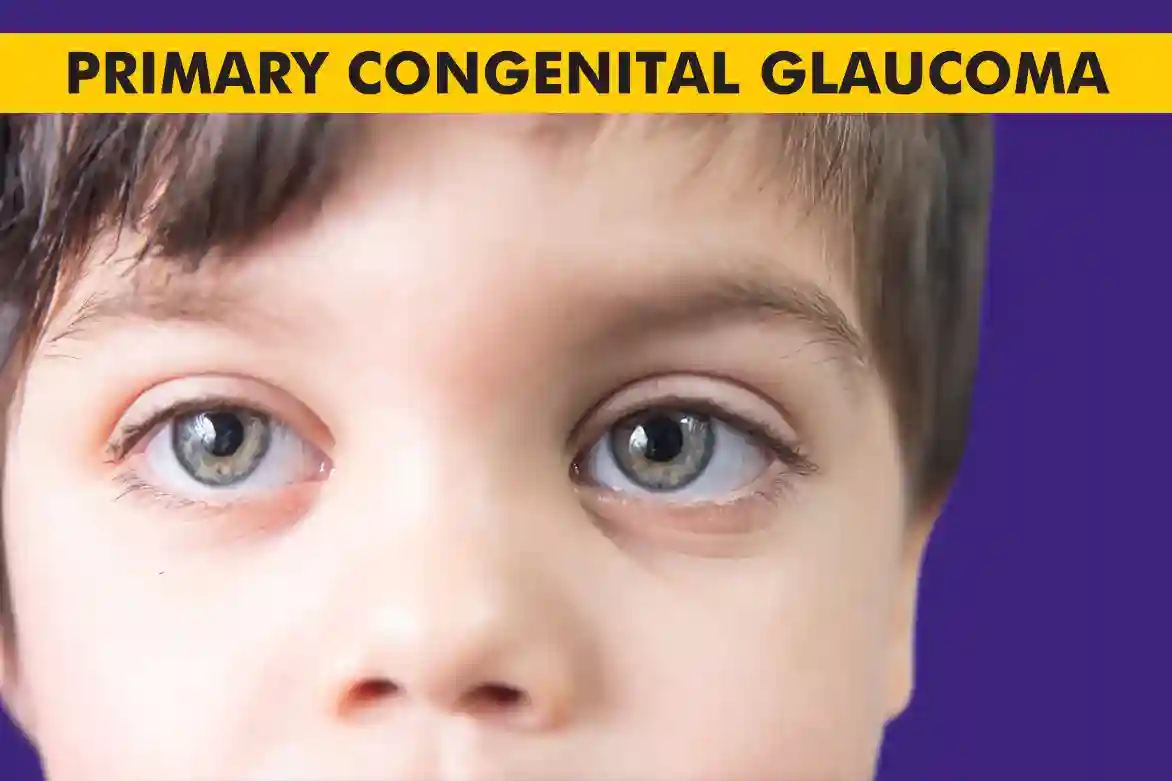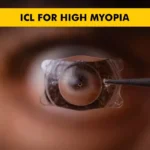What is Congenital Glaucoma?
Congenital glaucoma is a rare but serious eye disorder that affects infants and young children. It occurs due to abnormal development of the eye’s drainage system, leading to increased intraocular pressure (IOP) and potential damage to the optic nerve. The inability of aqueous humor (fluid inside the eye) to drain properly results in pressure buildup, which can gradually impair vision. Early diagnosis and timely congenital glaucoma treatment are essential to preserve vision and prevent complications.
This condition is one of the most common causes of childhood blindness worldwide. It can present at birth or within the first few years of life. Because infants and young children may not be able to communicate their vision problems, parents and pediatricians must be vigilant for early signs and seek medical attention promptly.
Congenital Glaucoma Causes
The primary cause of congenital glaucoma is the defective development of the eye’s drainage system. The trabecular meshwork and anterior chamber angle, responsible for fluid drainage, fail to form correctly, leading to increased intraocular pressure.
Primary Congenital Glaucoma
- Genetic Mutations: Some cases are linked to mutations in genes such as CYP1B1, which affect eye structure development.
- Hereditary Factors: A family history of glaucoma increases the risk, although spontaneous cases also occur.
- Isolated Condition: Primary congenital glaucoma occurs without other systemic or ocular abnormalities.
Secondary Congenital Glaucoma
- Ocular Syndromes: Conditions like Axenfeld-Rieger syndrome, Sturge-Weber syndrome, and aniridia may contribute to glaucoma.
- Trauma or Infections: Infections during pregnancy or birth trauma can disrupt normal eye development.
- Surgical or Medication-Induced: Some cases result from previous ocular surgeries or long-term corticosteroid use.
Congenital Glaucoma Symptoms
Symptoms of congenital glaucoma typically appear within the first year of life. The severity of symptoms depends on how much intraocular pressure has built up and for how long.
Common Symptoms:
- Excessive tearing (epiphora): The eyes produce more tears than usual, causing persistent wetness.
- Sensitivity to light (photophobia): Infants may squint, blink excessively, or turn away from bright lights.
- Cloudy or enlarged cornea (buphthalmos): High intraocular pressure causes the cornea to become enlarged and appear cloudy.
- Frequent eye rubbing: Due to discomfort, babies may rub their eyes excessively.
- Poor visual tracking: Infants with glaucoma may struggle to follow objects or respond to visual stimuli.
If left untreated, congenital glaucoma can lead to optic nerve damage, causing permanent vision loss.
Types of Congenital Glaucoma
Primary Congenital Glaucoma
This type develops without any associated systemic or ocular conditions. It is usually bilateral (affects both eyes) but may present asymmetrically.
Secondary Congenital Glaucoma
This occurs as a result of other eye diseases, developmental disorders, or systemic conditions affecting the eye’s anatomy. Secondary congenital glaucoma often requires a more tailored treatment approach depending on the underlying cause.
Congenital Glaucoma Diagnosis
Early and accurate congenital glaucoma diagnosis is crucial to prevent vision impairment. A thorough ophthalmologic examination includes:
- Tonometry: Measures intraocular pressure using specialized devices.
- Gonioscopy: Evaluates the drainage angle to determine structural abnormalities.
- Ophthalmoscopy: Inspects the optic nerve for damage caused by high pressure.
- Ultrasound Biomicroscopy (UBM): Provides high-resolution imaging of the anterior segment, aiding in structural analysis.
Early diagnosis and routine screenings are crucial, particularly in infants with a family history of glaucoma or related conditions.
Treatment of Congenital Glaucoma
Surgical intervention is often required to lower intraocular pressure and prevent vision loss. The choice of surgery depends on the severity and underlying cause.
Surgical Treatments
- Goniotomy: A minimally invasive procedure where a surgical instrument opens the drainage angle to improve fluid outflow.
- Trabeculotomy: Removes a portion of the trabecular meshwork to enhance drainage.
- Trabeculectomy: Creates an alternate drainage channel, reducing intraocular pressure effectively.
- Glaucoma Drainage Implants: Devices such as Ahmed or Baerveldt implants regulate fluid outflow in severe cases.
Medication Therapy
Although surgery is the primary treatment, medications such as beta-blockers or prostaglandin analogs may be prescribed to temporarily lower intraocular pressure or assist in post-surgical management.
Management of Congenital Glaucoma
Post-surgical management involves:
- Routine Eye Exams: Frequent check-ups ensure IOP remains under control and monitor for complications.
- Lifelong Monitoring: As congenital glaucoma can progress, ongoing observation is necessary.
- Visual Rehabilitation: Children with residual vision problems may require visual aids or therapy.
- Parental Guidance: Education on medication use, symptom recognition, and lifestyle modifications helps improve outcomes.
Prognosis and Long-Term Outlook
The prognosis of congenital glaucoma depends on the severity at diagnosis and the effectiveness of treatment. Early intervention increases the chances of preserving functional vision. However, delayed treatment can lead to irreversible damage.
Factors influencing prognosis include:
- Age at Diagnosis: Earlier detection results in better outcomes.
- Response to Surgery: Some cases require multiple interventions.
- Genetic Factors: Some inherited forms may be more challenging to manage.
Protect Your Child’s Vision with Early Diagnosis Schedule a Pediatric Eye Exam
Frequently Asked Questions
What is the main cause of congenital glaucoma?
Main cause of Congenital Glaucoma: Abnormal development of the eye’s drainage system.
Is congenital glaucoma curable?
Curability of Congenital Glaucoma: It’s manageable with early diagnosis and treatment, but not curable.
What is the life expectancy of people with glaucoma?
Life Expectancy of People with Glaucoma: Glaucoma itself doesn’t affect life expectancy, but early detection and treatment can prevent vision loss and improve quality of life.
What is the difference between congenital and juvenile glaucoma?
Difference Between Congenital and Juvenile Glaucoma: Congenital glaucoma is present at birth or shortly after, while juvenile glaucoma develops later in childhood or adolescence.
What deficiency causes glaucoma?
Deficiency Causing Glaucoma: There’s no specific nutrient deficiency directly causing glaucoma.
What is the root cause of glaucoma?
Root Cause of Glaucoma: It’s primarily associated with increased intraocular pressure damaging the optic nerve, but factors like genetics and other eye conditions contribute as well.
What is congenital glaucoma, and how is it different from adult glaucoma?
Congenital glaucoma is present at birth due to abnormal eye development, whereas adult glaucoma develops gradually due to aging, trauma, or secondary factors.
What are the warning signs of congenital glaucoma in infants?
Signs include excessive tearing, light sensitivity, cloudy corneas, and an enlarged eye appearance. Early medical evaluation is essential for timely intervention.
Can congenital glaucoma be treated without surgery?
Mild cases may be managed with medications, but surgery remains the most effective treatment for most infants with congenital glaucoma.
Is congenital glaucoma hereditary?
Yes, genetic mutations can contribute to the condition. A family history of glaucoma increases the risk.
How often should a child with congenital glaucoma have eye check-ups?
Regular follow-ups every few months are necessary to monitor intraocular pressure and ensure optimal eye health.





